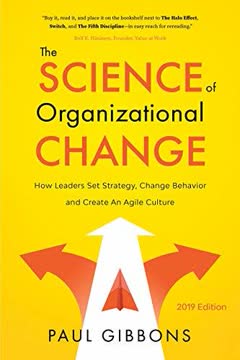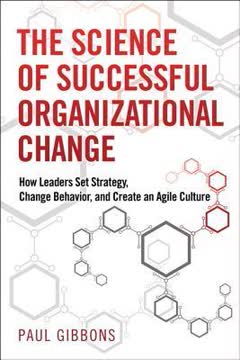Key Takeaways
1. Change Failure is a Preventable Cost.
Dozens of surveys place the actual failure rate at around 50 percent.
High failure rates. Organizational change initiatives frequently fail, with surveys indicating success rates around 50%, not the often-cited 70% failure rate. This widespread failure, from IT projects to mergers, represents a significant, preventable cost to businesses, often exceeding billions of dollars. For example:
- 50% of mergers fail to deliver value.
- 17% of large IT projects threaten company existence, running 45% over budget and delivering 56% less value.
- Only 41% of change projects are successful, according to an IBM report.
Beyond megaprojects. While visible megaproject failures grab headlines, most change failures occur in standard programs or daily, non-programmatic changes. Managers are constantly juggling numerous initiatives, highlighting that "business as usual" is a fantasy, and change is an ongoing, pervasive aspect of modern work. This constant flux means the idea of a static organization is a harmful myth.
People problem. The root of change failure often lies in "people problems," which are frequently undervalued or outsourced to specialists. Technical challenges, project management issues, and human factors like engagement and culture are all intertwined leadership issues, demanding a shift from "change management" to widespread "change leadership" where every manager is equipped to lead change daily.
2. Cultivate Change-Agility for a VUCA World.
An organization’s ability to learn, and translate that learning into action rapidly, is the ultimate competitive advantage.
Adapt or perish. In a Volatile, Uncertain, Complex, and Ambiguous (VUCA) world, an organization's ability to adapt, learn, and innovate rapidly is its ultimate competitive advantage. Businesses that are change-fragile risk being disrupted, while change-agile organizations surf disruptive waves and set the pace for competitors.
Antifragile systems. Drawing on Nassim Taleb's concept of antifragility, the ideal organization doesn't just survive stress but strengthens and prospers from disorder. This requires a systemic approach, integrating agile people, culture, structures, and processes, rather than focusing on isolated elements. The system's output is limited by its weakest link.
Holistic transformation. Achieving change-agility demands a holistic transformation across the entire organization. This includes fostering growth mindsets in people, cultivating innovative cultures (e.g., Google's 70-20-10 rule for innovation), adopting flexible structures beyond rigid hierarchies (like project-based models or holacracy), and implementing agile processes for idea management, execution, and continuous learning (e.g., Learning 2.0).
3. Strategic Coherence Prevents Costly Collisions.
Strategic coherence is more important than strategic precision in an uncertain world.
Beyond tactics. True change strategy focuses on ensuring the entire portfolio of change initiatives aligns with and delivers the overarching business strategy, rather than merely on tactical implementation steps like communications or stakeholder management. Many publications on "change strategy" mistakenly define it as tactical.
Avoid collisions. In large, complex organizations, strategic incoherence can lead to costly, contradictory efforts. For instance, a company might cut headcount while simultaneously hiring contractors for a new product launch, resulting in millions in wasted capital and internal conflict. This "strategy-tactics split" often means strategists don't understand implementation realities.
Continuous involvement. Effective change strategy requires continuous, rather than episodic, involvement of key people from strategy formulation onward. This prevents flawed strategies from being developed in isolation and ensures that tactical implementation issues are considered upfront, fostering genuine engagement and better decision-making, moving beyond mere "set pieces" of involvement.
4. Master the Psychology of Risk and Uncertainty.
Our minds, especially our intuitions, are not equipped to deal with a probabilistic world.
Intuition's flaws. Humans are inherently poor at dealing with a probabilistic world, systematically misunderstanding risk and prediction. Our intuitions are prone to biases, leading to flawed decisions in both personal and corporate contexts, especially when stakes are high. This lack of "risk literacy" is a significant problem.
Systematic errors. Six systematic flaws plague human risk assessment:
- Believing in trends/patterns in random events.
- Placing faith in small samples (e.g., case studies).
- Becoming risk-seeking when things are difficult (e.g., "getting it back").
- Misjudging relative probabilities (e.g., fear of terrorism vs. car accidents).
- Zero-risk bias: Discounting tiny probabilities with catastrophic consequences.
- Misunderstanding "risk of ruin" (e.g., over-wagering capital).
Beyond point estimates. Traditional planning relies on deterministic "point estimates" (e.g., "this project will cost X"), which are often overly optimistic and fail to capture the probabilistic nature of outcomes. Leaders must embrace probabilistic thinking, using tools like "pre-mortems" (imagining spectacular failure to work backward) and "SOCKS" analysis (Shortfalls, Overruns, Consequences, Killed, Sustainable) to realistically assess a range of potential outcomes, including catastrophic "black swan" events.
5. Combat Cognitive Biases for Sound Strategy.
The essence of rationality is to know when you are being irrational, and how you are being irrational.
Systematic errors. Human decision-making is not randomly flawed; it's systematically biased. These cognitive biases, rooted in evolutionary shortcuts and emotional influences, lead to predictable errors in perception, problem-solving, and solution selection, especially under pressure. Understanding these biases is crucial for improving decision quality.
Perception biases. Optimism biases, such as overconfidence and the "halo effect," can blind leaders to risks and failures, leading to poor judgments. The "ostrich effect" causes avoidance of painful truths (e.g., ignoring past project failures like British Airways' "Project Phoenix"), hindering learning from mistakes and perpetuating ineffective practices.
Problem-solving pitfalls. Biases like "availability" and "confirmation" limit problem definition, causing leaders to see only what confirms their existing beliefs. The "narrative fallacy" leads to oversimplified cause-and-effect explanations, often blaming individuals rather than systemic issues, resulting in ineffective "quick fixes" and wasted resources. Leaders must resist "satisficing" and "herd behavior" when selecting solutions.
6. Dispel Myths: Understand Human Behavior Scientifically.
We need, I think, great humility and skepticism about our knowledge of human behavior because our knowledge of the mind and of what makes people tick are far from certain.
Folk psychology's limits. Our everyday "folk psychology" provides intuitive social intelligence but is prescientific, leading to unexamined theories about human behavior. While effective in familiar contexts, it often fails in complex organizational change, where old patterns are disrupted and people are under stress, leading to misattributions like the "fundamental attribution error."
Pop psychology's dangers. The business world is inundated with "pop psychology" and "pop leadership" that often oversimplify or misrepresent scientific findings. This proliferation of half-truths, fads, and uncritical acceptance of guru pronouncements (e.g., the 10,000-hour rule, learning styles, "right-brained" people) trivializes serious subjects and hinders genuine progress in leadership development.
Psychology's immaturity. Psychology, as a science, is relatively young and faces challenges in measurement and rigor, making it susceptible to pseudoscience (e.g., phrenology, graphology). This leads to either measuring nothing (abandoning accountability for interventions like OD workshops) or over-quantifying easily measurable but less important aspects, creating a "black hole of accountability" in HR and organizational development.
7. Embrace Neobehaviorism for Effective Change.
You can act your way into a new way of thinking, rather than think your way into a new way of acting.
Beyond coercion. Traditional behaviorism, with its focus on rewards and punishments, is often ineffective, ethically problematic, and can destroy intrinsic motivation. Neobehaviorism offers a modern approach that emphasizes changing behaviors without first changing hearts and minds, while preserving autonomy and dignity.
Act your way. The core neobehaviorist mantra is "You can act your way into a new way of thinking," recognizing that sometimes behavior change precedes shifts in beliefs or feelings. This approach focuses on observable actions, allowing for scientific measurement of cause and effect in interventions, and acknowledging that motivation is mercurial.
Practical tools. Neobehaviorist practices include:
- Behavioral specificity: Using checklists (e.g., Dr. Pronovost's ICU checklist saving lives) to clarify new routines and reduce error.
- Behavioral safety: Implementing strict rules and observation (e.g., Shell's "always hold handrails" policy) to embed safety culture.
- Choice architecture (Nudging): Structuring environments to subtly steer choices (e.g., opt-out 401(k) enrollment, office design, supermarket layouts) without direct coercion.
- Habit mastery: Leveraging "implementation intentions" ("when-then" statements) and "mini-habits" (e.g., one push-up a day) to build new routines, bypassing mercurial motivation.
8. Influence Hearts & Minds by Addressing All Resistance.
Senior leaders often forget that resistance is engagement, just not yet the kind of engagement we want.
Resistance is engagement. Resistance to change is often misunderstood as irrational opposition, but it's a form of engagement that signals underlying concerns. Leaders must learn to detect its manifestations (the "four Ds": destruction, delays, dissent, and distancing) and address the root causes rather than just the symptoms.
Holistic understanding. Effective influence goes beyond just providing information or addressing emotions. It requires understanding resistance through a holistic lens, considering:
- Ideological/Value conflicts
- Social influences and group norms
- Habitual patterns
- Political allegiances
- Perceived threats to identity or interests
This avoids "psychologizing" change as merely a "grieving process."
High-involvement methods. For "wicked messes" with high social complexity, traditional "telling" or "selling" approaches fail. Large Group Interventions (LGIs) like "strategy cafés" or "future search" bring diverse stakeholders together for co-creation, fostering shared understanding, unlocking engagement, and building trust by sacrificing "power over" for "power to." These methods are crucial when no single authority can force change.
9. Develop Leaders with Science-Based Mindfulness.
If you just sit and observe, you will see how restless your mind is. If you try to calm it, it only makes it worse, but over time it does calm, and when it does, there’s room to hear more subtle things—that’s when your intuition starts to blossom and you start to see things more clearly...
Train the mind. Just as athletes train physical faculties, leaders can train fundamental mental skills like attention, cognitive flexibility, and emotion regulation. Mindfulness practices, rooted in ancient contemplative traditions, offer a scientifically supported method for developing these "generative" mental capabilities.
Metacognitive benefits. Mindfulness cultivates metacognitive awareness, allowing leaders to "step outside their thinking" to observe mental processes, interrogate assumptions, and gain perspective. This enhances:
- Attentional control and concentration
- Situational awareness
- Cognitive flexibility and choice
- Emotion and impulse regulation
- Overall well-being and happiness
Practical application. Even short, daily mindfulness sessions (e.g., 20 minutes, or even 1-minute "mini-habits") can yield significant benefits in attention, mood, and stress reduction. Leading companies like Google are integrating mindfulness into leadership development, recognizing its potential to enhance focus, clarity, creativity, and compassion in leaders, making it a legitimate "sit break" in busy corporate cultures.
10. Lead with Science: From Craft to Evidence-Based Management.
The craft of business leadership today pays too little attention to the science of how humans tick and too much attention to folk and pop psychology.
Beyond anecdote. Business leadership is largely a "craft" based on experience, intuition, and anecdote, rather than rigorous science. This leads to widespread, costly practices (like unstructured interviews or ineffective incentive schemes) that lack empirical support, costing businesses billions. "The plural of anecdote is not data."
Scientific mindset. A "science-based craft" for leadership demands a shift towards a scientific mindset:
- Skepticism: Questioning claims until evidence is provided, avoiding gullibility and cynicism.
- Curiosity: A hunger for discovering "unknown unknowns" and asking open questions.
- Experimentation: Prototyping and testing ideas, even for everyday rituals, embracing "going from failure to failure without loss of enthusiasm."
Evidence-Based Management (EBM). EBM integrates practitioner expertise with the best available scientific evidence, organizational data, and stakeholder concerns. It moves beyond prescientific reliance on expert opinion and case studies, advocating for controlled experiments and rigorous evaluation (like Randomized Controlled Trials where possible) to ensure policies and interventions truly work, driving continuous learning and reducing waste in organizations. This means challenging "antiscience" (rejecting facts) and "pseudoscience" (pretending to be science).
Last updated:
Review Summary
Reviews of The Science of Organizational Change are mixed. Some readers found it insightful, praising its digest of leadership concepts and focus on scientific rigor in change management. However, many criticized the writing style, citing poor editing, overuse of lists, and a sales-like tone. Several reviewers felt the book lacked depth or practical guidance, while others appreciated its critique of established change management theories. Common complaints included difficulty reading, lack of originality, and excessive self-promotion by the author.
Similar Books
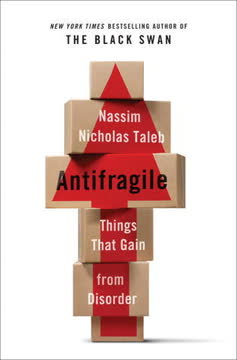
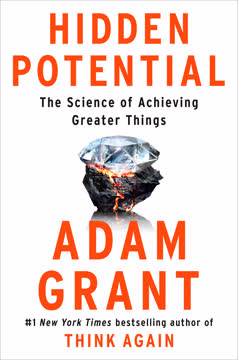
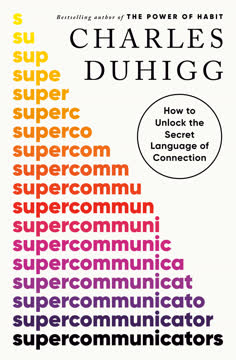



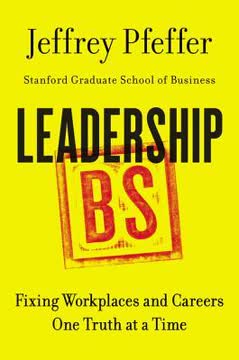
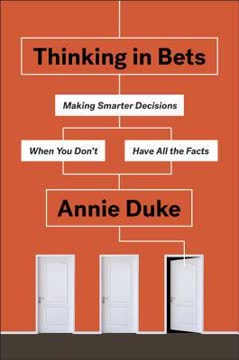
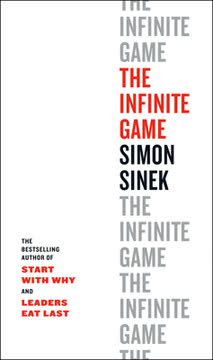
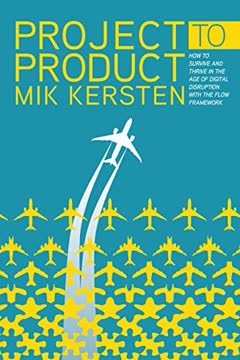
Download PDF
Download EPUB
.epub digital book format is ideal for reading ebooks on phones, tablets, and e-readers.
